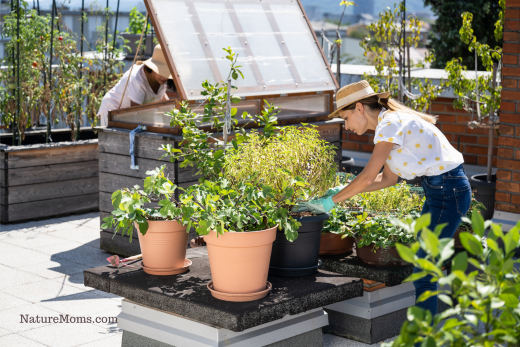Harnessing Nature’s Bounty for Sustainable Gardening
3 min read
In our quest for sustainable and eco-friendly gardening practices, hugelkultur has emerged as a remarkable technique that not only promotes healthy plant growth but also nurtures the environment. Derived from the German words “hugel,” meaning mound, and “kultur,” meaning culture, hugelkultur involves creating raised garden beds by layering organic materials. In this blog post, we will explore the benefits of hugelkultur and how you can implement this technique in your own garden.
-
Enhanced Soil Fertility
At the heart of hugelkultur lies the concept of building a rich and fertile soil ecosystem. By burying logs, branches, leaves, and other decomposable organic matter beneath the soil, hugelkultur beds naturally break down over time, creating a nutrient-dense environment. As the organic materials decompose, they release vital nutrients into the soil, providing a steady and long-lasting source of nourishment for plants.
-
Water Retention and Regulation
One of the remarkable benefits of hugelkultur is its ability to regulate soil moisture levels. The organic materials in hugelkultur beds act as sponges, absorbing water during rainy periods and gradually releasing it during dry spells. This water retention capacity helps plants withstand drought conditions and reduces the need for frequent watering, making hugelkultur an excellent choice for water-conscious gardeners.
-
Improved Soil Structure
Hugelkultur creates a well-structured soil that promotes optimal root growth and aeration. The decomposition process of organic matter in hugelkultur beds encourages the growth of beneficial fungi and microorganisms, which contribute to the soil’s overall health. The resulting loose and crumbly soil texture facilitates root penetration, improves nutrient uptake, and ensures adequate oxygen circulation, leading to healthier plants.
-
Long-Term Sustainability
Unlike conventional gardening methods that require regular inputs of fertilizers and amendments, hugelkultur beds are designed to be self-sustaining over the long term. Once established, the gradual breakdown of organic materials in the bed continually replenishes nutrients, eliminating the need for synthetic additives. This sustainable approach reduces the reliance on external resources, making hugelkultur an eco-friendly choice for gardeners.
-
Weed Suppression
Hugelkultur beds naturally suppress weed growth, thanks to their layered construction and nutrient-rich soil. The deep layers of organic matter act as a physical barrier, preventing weed seeds from reaching the soil surface and germinating. Additionally, the nutrient-rich soil favors the growth of desired plants, effectively crowding out weeds.
-
Climate Resilience
In a changing climate, hugelkultur offers resilience by providing a buffer against extreme weather conditions. The dense organic matter in the beds acts as insulation, protecting plant roots from temperature fluctuations and frost. This insulation effect helps extend the growing season, enabling gardeners to cultivate plants in areas with shorter summers or colder climates.
Hugelkultur is a sustainable and efficient gardening technique that maximizes the potential of organic materials while nurturing healthy plant growth. By harnessing nature’s own processes, hugelkultur beds offer numerous benefits such as enhanced soil fertility, water retention, improved soil structure, long-term sustainability, weed suppression, and climate resilience. Whether you have a small urban garden or a large rural plot, hugelkultur is a versatile method that can transform your gardening experience and contribute to a greener future.
Recommended:







